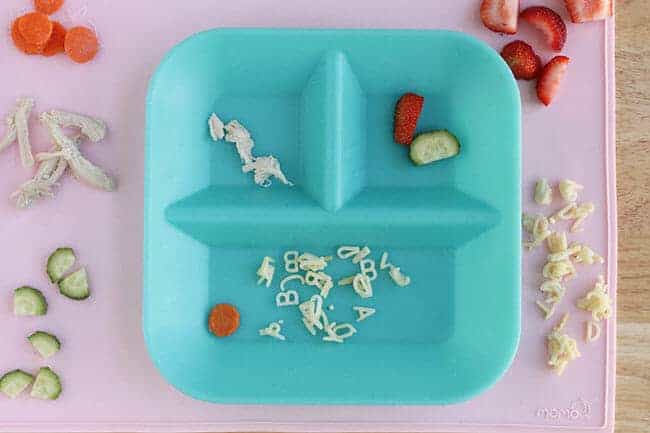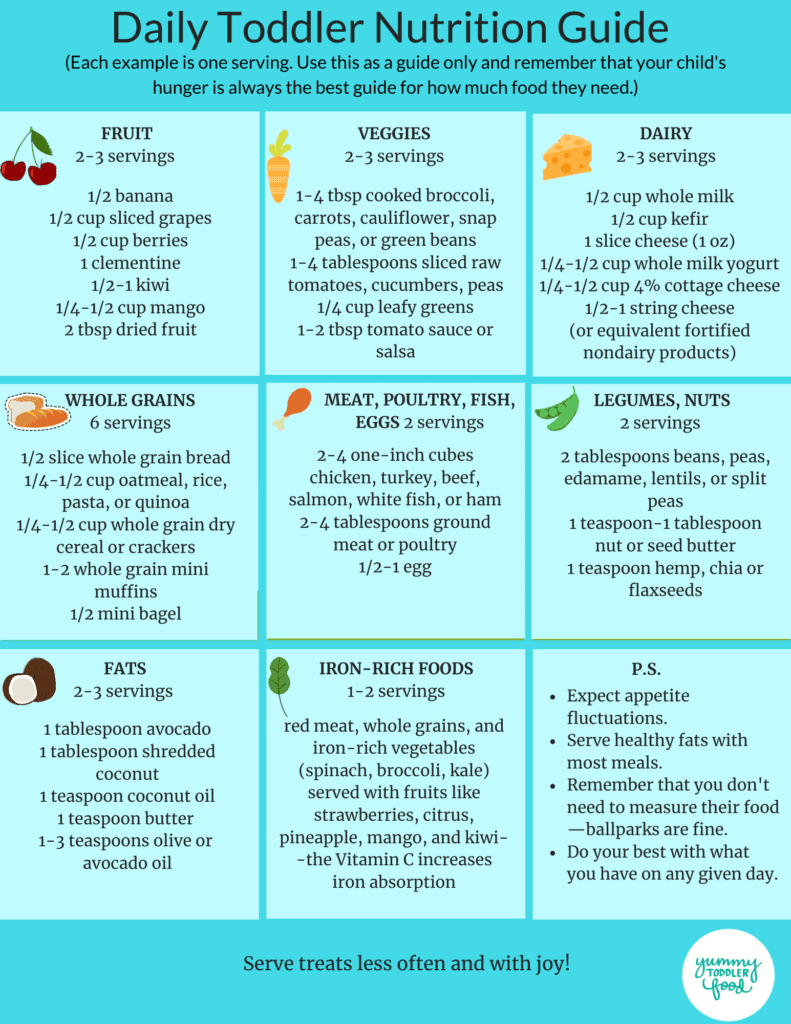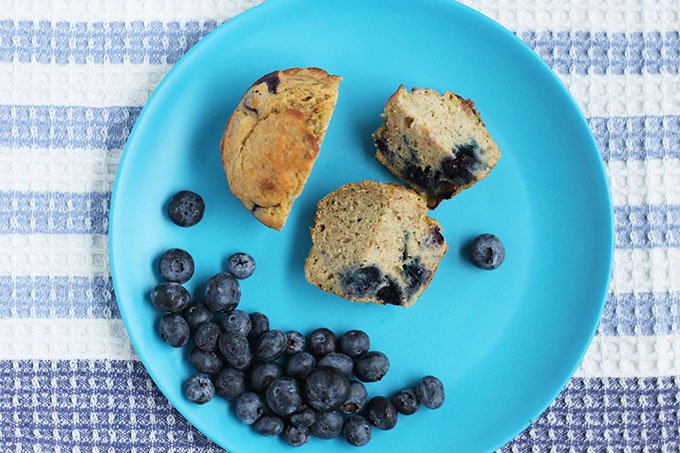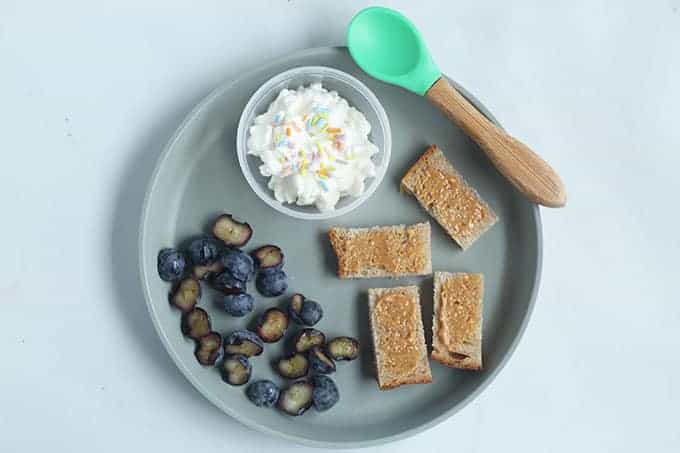
This post may contain affiliate links. If you shop from one of our links, we may earn a commission.
Is your picky toddler not eating? It happens to all of us at one time or another. Here’s why it might be happening…and what you can do to make it better (or at least how to know what’s normal so you can relax).

You get everyone to the table and bring out the food. Your toddler won’t eat, throws a fit, or fusses. No matter how hard you try, this is often the reality of feeding toddlers. The good news is that a toddler not eating is actually quite normal.
The bad news? It’s a difficult thing to know exactly why your toddler isn’t eating—and what exactly you should do about it.
But there are simple steps you can take to improve the situation.
Family meals are a chance to be together at the end of a long day, to enjoy food, and to create daily rituals and routines. But when a toddler won’t eat, whether at the family table or not, it can throw off even the best of intentions. And it can make meal time a huge source of stress.
The reasons a toddler won’t eat are unique to each kiddo and situation, so I’m going to try to be as comprehensive as possible here.
Your toddler won’t eat? Help is here!
Sign up for our email updates to get tips and ideas sent to your inbox.

For a quick reference, you can download my Printable Toddler Nutrition Guide so you can refer to it for reassurance and information. Use it as a guide, not a hard-and-fast rule, since kids aren’t robots and will not eat like a chart. I share this first because portion sizes may actually be a lot smaller than you realize and often we are simply overestimating the amount that our kids need.
(Aim to serve healthy fat with most meals or snacks since little kids need it for proper brain development.)
It’s very possible your toddler’s not eating because he simply isn’t as hungry as he was when he was a baby. Toddlers grow less rapidly than babies and may be less hungry and need less food than you expect. If you give them a larger portion size than they need, they may eat some and leave the rest—and it may visually look like they haven’t eaten anything even though they did.
And toddlers don’t always have the words to be able to effectively communicate that they aren’t hungry, so they may just refuse to eat. This may look like playing with food, throwing food, or flat-out refusing to have anything to do with food.
A normal toddler meal may be two bites of a food. Or it may be a whole plate. A normal toddler may like something immensely one week and not at all the following week.
This is to be expected and is 100% normal.
Or, it’s entirely possible that once they have it in their head that they don’t want something, they won’t eat it. Sometimes not wanting dinner is about power. Toddlers are in the developmental stage where it’s normal for them to test boundaries. They are learning what they can and cannot do and the effects their actions have—both at the table and away from it.
Talk with the rest of your family about how to create some structure around meals—when they happen, where they happen, who sits where, if music is playing, if phones are put away—to help your child know what to expect. Toddlers thrive on routine and attention.
product we love

Dabbldoo Food Picks
Introducing a fun utensil can help your toddler relax and get excited about eating. Our favorite food picks are specifically designed to be safe and effective for toddlers. These are used by feeding professionals and parents to help kids explore and try new foods every day. (sponsored)
There are a few ways to rethink this issue. First, if you are in the habit of short-order-cooking the foods you know your toddler will eat, you may want to consider stopping. Explain to your kids that we’re having such-and-such tonight but that you will make their requested favorite food soon. Then follow through so they know they can trust you!
Then, make sure there are 1-2 foods on the table that the child usually likes, even if it’s something simple like fruit or cheese. Surround them with the food you want them to eat and let them decide what and how much of it to eat.
Using this Division of Responsibility in Feeding approach to meals can be a total GAME CHANGER, as it clearly delineates what the parent and child are each responsible for at the table, lessening pressure on everyone. It also gives the child a chance to stay in touch with their own hunger cues without prodding, pushing, or cajoling—which has the added benefit of helping to make mealtimes more enjoyable for you, too.
We want our kids to know their own hunger and fullness cues so they know how much to feed themselves as they grow into adolescents and adults when we aren’t around. And those cues can be hard to tap into if they are constantly overridden by external cues (like if we push them to eat a certain amount), however well-intentioned.
You can also try to involve them in doing something to help get ready for the meal to distract them from their concern about what’s for dinner. Try letting them help to set the table, help with simple meal prep (like washing veggies), or wash their hands. Hand washing is an excellent toddler-diversion tactic when they get upset about something.
If you are okay with cooking separate meals for your kids because it works better for you right now to know they will eat the food you make, then by all means, do that.
But if you’re wanting your child to eat family meals and eventually eat more of the same foods as the rest of the family, then try the tips I just shared above.
Remember: Even if you follow all feeding advice “perfectly”, your child may still eat differently than you expect. That is normal.
It is incredibly difficult to accurately estimate someone else’s hunger. I am a big proponent of moving from the goal of “getting the kids to eat” towards “how can I make mealtimes happier for all of us?”.
TIP: Almost every toddler is “picky” in one way or another at some point. Toddlers are quirky, it’s part of the fun! (And the challenge, of course.)

If your child is playing with their food rather than eating it at the start of the meal, chances are they aren’t hungry enough to eat. Take a break and try again in 30 minutes if possible—or for the next snack or mealtime.
If your child just doesn’t seem hungry for any food or much food, consider how long it’s been since their last meal or snack, how much milk (or juice) they’re drinking throughout the day, how much they ate at their last meal or snack, and whether teething toddlers or tired or otherwise off.
It’s very possible a toddler won’t eat simply because they aren’t as hungry as you expect them to be.
Or they may be hungrier earlier in the day and taper off with their intake as the day goes on.
If your toddler won’t eat foods he once liked, try serving them in new ways—such as cutting carrots into sticks rather than rounds before cooking them, but also remind yourself that it’s normal for toddlers to go through phases of loving and not loving foods. They may be obsessed with blueberries one week and not want them again for two months.
It’s possible they simply need a break from having certain foods as frequently. That is OK. (And very relatable!)
Often, if a toddler knows there is a snack ahead that includes traditional “snacky” foods, they won’t eat the meal you are serving. It can help to serve “regular” food at snack time, instead of relying on crackers and fruit snacks, and serve classic “snack” foods with meals. This can even out the appeal of all food intake opportunities.
In other words, think of snacks as mini meals and serve all types of foods at each eating opportunity.
Kids often relax when they have access to their favorite foods, so there’s nothing wrong with serving Goldfish crackers along with strawberries and a hard-cooked egg. Or a chocolate chip snack bar with a banana and carrot sticks. It’s all good!
When it comes to feeding, the best thing you can do is to give your child lots of low-pressure opportunities to see (and maybe) eat a range of foods—while still offering foods your kids you know your kids usually eat. It’s all about balance…for everyone involved.
It still counts as an exposure even if a child doesn’t eat a food. They can touch it, see it, learn what it’s called, and add to their food literacy—which can be helpful over time as they grow.

There will be times when your toddler simply doesn’t like a meal you make. And whether it’s the texture, flavor, appearance, or the way the wind is blowing, we may never know, but it will happen. Or, a toddler won’t eat at times because they are either not that hungry or they know you will get them something they prefer if they refuse.
A child will usually choose a more familiar, fun, and safe food when given the chance. But if you pair safe foods with other ones, they can gently expand their accepted food range. Or, at the very least, have those exposures to other foods (even if they don’t eat them yet).
My method is to make family dinner, including 1-2 foods per meal that the kids usually like even if those foods are a simple side of fruit and milk. Then, if they don’t want to eat, I can trust that they aren’t hungry.
This is a very reliable method if you do it regularly. I do realize this is hard when it’s 6 p.m. and your little one hasn’t eaten a thing for dinner. If that happens and they legitimately seem hungry after dinner, wait at least 30 minutes (so they don’t feel rewarded for refusing dinner) and offer a super boring bedtime snack like a banana. If they are hungry enough for boring food, you know they are hungry!
If your toddler seems to legitimately dislike a meal, you can institute a “backup meal” to give them the chance to satisfy hunger. Choose something plain that they would likely never choose to eat by themselves and offer that and that alone so you don’t have to negotiate in the moment. (To me, this is something that should be used very rarely since it can create more work, especially if you have multiple children.)
Good backup meal options in our house are plain yogurt with granola, plain toast with nut butter, a scrambled egg, or a bowl of cereal. We keep the options plain.
When toddlers are sick, normal eating very often goes out the window. With any illness, appetites can decrease. The general rule that our pediatrician always shares is that as long as they are drinking and going to the bathroom normally, then you shouldn’t need to worry too much.
Keep portion sizes small, keep the actual foods simple, don’t push food too hard, and trust that their little bodies are doing what they need to feel better. You can get back to normal eating when they are feeling better, and you can always check in with your doctor.
Be patient since lower appetites can linger longer than you might expect, even once a child starts to feel better. And of course, check with your doctor if they aren’t drinking, there’s another red flag, or you just need reassurance from a medical professional.
Also, toddler teething can cause reductions in hunger. Try not to expect that your toddler will eat normally when they are cutting teeth (especially not with molars!) and instead offer them plenty of liquids, chilled foods, and things that don’t require too much chewing—toddler smoothies, yogurt for babies, Alphabet Pasta, Strawberry Popsicles—to help avoid irritating their already sore gums.

If you have a toddler who’s not eating but drinks lots of milk, it’s possible that milk is filling their bellies and reducing hunger for other food. (The same can be said for any other food that they are insisting is the only food they want.)
The AAP recommends toddlers have 2-3 serving of dairy a day, which includes milk and other dairy foods like cheese and yogurt. A serving of milk for a toddler is ½ cup. Try serving a smaller portion of milk just at meals and offering water in between. (You may need to do this gradually, especially since milk is often a comfort food.)
Keep portion size in mind, especially if your toddler won’t eat anything but milk, since cups and bottles can be quite large. This 4-ounce sippy cup is a nice size to use at meals since it ensures that a toddler won’t fill up on milk and will be more likely to have room in their bellies for some food. A very small juice glass works, too.
You may need to taper down the volume in bottles to start weaning a toddler if that’s how they’re consuming their milk.
Try:

Why do you want to increase your toddler’s appetite? Are you worried she isn’t eating enough of the “right” foods? That she is “too small”? Is she low on the growth curve? A good question to ask is whether her growth is consistent with her own history, not as compared to other kids her age.
Every toddler grows at their own unique speed, and it’s possible she is exactly the size she needs to be—and is eating a perfect amount for herself in her current phase.
If your toddler truly doesn’t seem to be eating enough (remember, they may eat only ¼ as much as an adult…you may need to adjust your expectations!) and there is a medical concern—such as if they have fallen off of their growth curve or are losing weight—you can try serving smaller snacks and meals more often, adding lots of healthy fats to their food, and getting them involved in the kitchen.
Here are some foods that may help a toddler gain weight.
Sometimes just being around food in a situation without pressure can encourage a kid to explore and enjoy more at the table, too.
Be sure to check with your pediatrician to make sure you’re on the same page about a plan if there’s a weight-loss issue.
Toddlers aren’t growing as rapidly as babies, so while your child may have eaten a lot as an older baby, he might not be as hungry now. This is very, very common in 1-year-olds.
One-year-olds are also BUSY. They have a lot going on in their little worlds and many constantly want to be moving.
Avoiding distractions at the table can help a toddler focus on their food, and keeping a consistent mealtime routine—when meals happen, where they happen, and what’s generally expected during a meal–can go a long way toward happier mealtimes for everyone.
One-year-olds are also just discovering that their actions have consequences, so they may not eat (or they may throw food or do all sorts of other behaviors) simply because they’ve realized that they can. Keep your reactions during meals as low key and consistent as possible so they don’t try to get you to react. (I fully understand that this is really hard.)

Outside of illness or teething, a 2-year-old won’t eat for similar power dynamics as above, but they also may be much more sensitive to new foods due to a normal phase called neophobia. This fear of new foods, which usually spikes between 2 and 6 (though it can start at 1 year old), can cause them to refuse foods they once loved and foods you think they will love.
It can also cause them to refuse to want to eat foods mixed together or foods with certain textures.
Try to remember that this is a normal phase of development that will, in all likelihood, eventually pass. Researchers have found you may need to offer a food 8-15 times before a child may willingly try it. In other words, keep on offering the foods you want them to eat regularly in small portions and without pressure, and eat those foods in front of your child.
Because even if they don’t want it today, one day they just might surprise you some day in the future.
(Two of my kids literally refused beans for two years at our weekly taco night. Then one day, they each decided to try them. It took forever, but it wasn’t really a big deal—since they had other foods on the table during those meals they could eat—and they got to that food in their own time.)
For a 2- and 3-year-old, serving family-style meals can also help to diffuse power struggles at the table. Simply put the components of the meal in bowls on the table and encourage and help your toddler decide what they’d like to eat. Don’t force bites of everything, unless your child responds positively to that approach, but give them space to choose what looks appealing.
This small amount of ownership over what goes onto their plate can be extremely helpful for strong-willed toddlers. A lot of times, all they really want is to feel like they have some control over their lives.
A 3-year-old may not eat for reasons similar to a 2-year-old, but they may also have more words to express themselves—so they may be more dramatic in their response. They may not be as hungry as you expect, their appetite may be unpredictable, or they may be worn out by the time dinner rolls around. (That last one is fairly common!)
Three-year-olds also know how hard they need to push to get what they want. Toddlers at this age benefit from set expectations at mealtimes and routine. Which is to say, if you start getting up to get them foods other than the ones you’ve made for dinner, they will continue to demand that you do that.
There’s no rule that says that a toddler needs to eat every single thing you serve for dinner. If they eat some of it, there’s decently good behavior, and minimal crying, that can be defined as a happy meal. Keep the bar low, my friends, and you might find that things are better than you realize!

You may simply have a child who isn’t super hungry first thing in the morning. Try to give them a little time to wake up before sitting down for breakfast and/or serve a smaller portion for toddler breakfast and increase the amount of the morning snack.
If your toddler drinks milk or breastfeeds in the morning, it’s possible they have a full little belly that doesn’t have room for food. Keep that in mind if your toddler won’t eat breakfast and adjust expectations accordingly—and perhaps also serve smaller amounts of food.
It’s certainly possible! If a little one (or anyone, really) feels uncomfortable in their belly, the idea of putting food into it may not be appealing. In addition to fiber, having enough water is key to alleviating toddler constipation, so offer lots of water to drink throughout the day, along with hydrating produce like melon, cucumbers, berries, and zucchini.
You can also try to include healthy fats (avocado, coconut oil) in their diet, or try a Constipation Smoothie, as they, too, can help food more easily move through the digestive system. And remember: Each kiddo has their own “regular,” so it’s possible that your toddler needs to go once every two or three days…or three times a day.
If your toddler has been holding it all day at school, he may not want to eat dinner because he’s uncomfortable. Try to give him a chance to use the potty, with as much time as is needed to relax, before dinner.
If your toddler has some time between dinner and bedtime, she very well might be hungry before bed. You could either push dinner back a bit or institute a regular bedtime snack. This is a tactic I read about in this book and it makes sense.
If there is always an easy bedtime snack, you won’t have to renegotiate it every night. And you also won’t have to worry about sending your child to bed hungry if you are prone to that particular worry.
I’d just caution against making the snack something they LOVE because kids may recognize that they can simply skip dinner and have the snack they love instead. If a child regularly asks for a snack right after dinner, it may be a habit (or a bedtime delay tactic!), not true hunger. Try “you can be hungry for breakfast” or “if you’re really hungry, you can have a banana.” Both of those phrases can work wonders to suss out true hunger.
Try:

Here’s some great advice from Katja and Jenny, the authors of Extreme Picky Eating:
“Ask yourself: What is your underlying fear? The point is to figure out what you are worried about, and then find out if you need to worry (or not) from a book, a doctor, or dietitian. If you don’t need to worry, you can direct your energies to more productive things like supporting your child’s eating. If a problem is discovered, like an oral-motor delay, then you can get that addressed. Studies suggest that between one- and two-thirds of all young children will be described as ‘picky’ in early childhood.”
If there is a growth delay, severe reactions to different or toddler texture aversions, regular gagging, difficulty eating or digesting, oral-motor delays, muscular disorders, or any other issues that make eating difficult, reach out to your pediatrician and/or a feeding therapist. They will be best suited to help you work through the issues.
Bottom line: When a toddler won’t eat, it is not a judgement on our cooking skills or our parenting skills. A lot of it has to do with the developmental stage they are in—of learning and exploring boundaries—and simply seeing how much power they have. Hang in there!